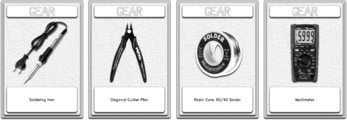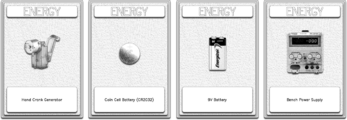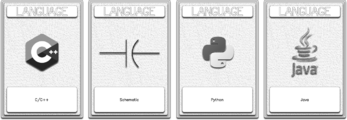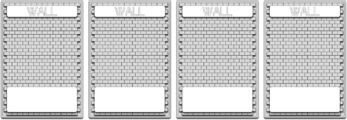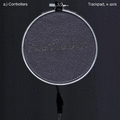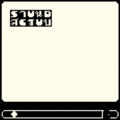User:Supisara/Project Proposal Update
What do you want to make?
Note: this is an updated, more specific version of the previous project proposal.
A publication that explores the fun amongst the friction of learning DIY electronics. It is an entry point that (1) introduces newcomers to electronics in a format that is beginner-friendly, (2) lowers the learning threshold by suggesting an alternative, playful approach, and (3) encourages designers who feel that their creativity is limited by the industry-standard tools and methods to tinker and explore a hands-on, maker-driven approach of tinkering.
I would like this publication to reveal the potential of and give voice to small tools and components that may be underused, underacknowledged, or briefly touched upon in beginner DIY electronic kits. Making the jump in learning something new can be an intimidating experience, and I would like this publication to encourage designers to cultivate and develop their own approaches that are vernacular, unconventional, and speak to their skill levels and interests which do not necessarily follow what is instructed in the how-to guides.
Format: a combination of a DIY electronics kit (sound-based circuit) + print (fanzine) + web (interactive fiction):
Audience:
- Graphic designers who would like to explore an alternative way to create (beyond the mouse and the keyboard)
- Graphic designers who would like to learn about electronics so that they can integrate it with their existing practices
- Graphic designers who would like to learn about how sound works and explore ways to create them on their own
- Artists and designers who are curious and would like to learn more about electronics but don't know where to start or feel intimidated by the technical diagrams
- Gamers and sound artists who are curious about how interaction and sound can be translated and combined in an alternative way
How do you plan to make it?
Methods
The publication will begin with a fanzine of a beginner-friendly DIY electronic component kit that will point to a website for further exploration via an interactive fiction, where additional components will be introduced.
1.) Print (fanzine) + electronic component
- Get to know the component: character profile of the chip/electronic component.
- Get to know how it behaves: assembly guide to explore the uses of the electronic component.
- Get to know how you can interact with it: learning logs/companions in the forms of (a) DIYry (to document on-the-fly observations in the process of making) and (b) DIYgestives (to consolidate technical information in a digestible way that is easy to understand and remember)
2.) Web (Twine interactive fiction)
- For those who wish to explore further can do so via the interactive fiction that will be created on Twine, where I will utilize game elements/mechanics to help tell the story and introduce other components in the circuit as characters, and obstacles that one may face as walls. By placing them in this context, I hope to lower the learning threshold and create a more digestible and enjoyable learning experience. Below are some sample cards that introduce common tools, components, and environments, as well as 'special powers'.
- Sample elements
- As everyone has different learning processes, I would like to invite others to consider and create their own versions of the characters and experiences they have encountered amongst the friction via a template that I will make available in a web to print format.
- Sample of customizable web to print version
What is your timetable?
December-January: Compile and narrow down components and methods, experiment and mockup print and web options
January-April Experiment with circuits, user-test, continue writing the text, continue publication mockups
April-May: Edit and curate texts and visuals, start making publication, proofread text
June: Refine publication and present project at graduation show
Why do you want to make it?
(1) Industry standard tools, platforms, workflows that are so streamlined/optimized/automated that there is no room to explore/express creativity:
- The urgency to investigate this further arose from the limitations on industry-standard tools and procedures observed in commercial graphic design practices. In such a streamlined, automated, optimized workflow, there is little to no room for creative explorations and opportunities to initiate changes in ways that allow designers to question the way we work and be critical of the tools we use, especially when we are also disconnected from a more intuitive and haptic approach of expressing creativity that is beyond the mouse and a keyboard. Another reason for this is from an observation I have made while exploring other disciplines outside of design: how certain tools or methods are considered too low-tech and clumsy, while some are preferred and more "elegant" than others. As an outsider without the specialized, industry-level knowledge and experience, I see the value in the former and find that it is through adapting, combining, and reframing them in order to reveal their potential is what makes the learning experience fruitful rather than intimidating. This is why I find moments when things break as an opportunity to learn and intervene: when the front-end "cracks" and the user has the opportunity to catch a glimpse of the back-end, and can begin to understand the his or her role in ways that may not seem possible otherwise. To disconnect and disassemble both ends, to lay the parts out to understand the actors in the process, and to realize that there is room for interruptions. I want to find or create the cracks within these tools to subvert their mechanisms and encourage the designer to have the autonomy or choice to disobey and to break, and my entry point to this is through DIY electronics. While tools are made for specific purposes, I believe that users have the ability to bend their functionalities and make them behave in ways they were not programmed to do so. Ultimately it is to suggest the potential of the user's agency in tool bending to fit their needs.
(2) High learning thresholds
- When one makes the jump to tackle a new field of interest, it comes with steep learning curves. This is particularly true in electronics, as I am still in the process and am trying to find ways to navigate myself and am finding ways to make the learning experience enjoyable and exciting. An example of this is through DIY kits vs. build your own circuits. As a beginner, it is common to rely on curated kits made specifically for beginners. However, you are limited by the types of kits that are offered that may not
- For instance, some starter kits leave out the small details that can actually be very helpful in the learning process. Because of this, the process becomes more frustrating, because it is still difficult to understand how something actually works, even when you have successfully soldered a kit together. This is why I would like to attempt to scrutinize the small parts in this publication and find a way to understand it, and make it understandable for someone else who is also curious.
Who can help you and how?
In addition to the tutors and colleagues at XPUB and WdKA's Interaction and Publication Stations, I would like to research the practice of and if possible, reach out to the artists, designers, developers, researchers, and educators who have inspired and influenced my practice for advice and feedback:
Software: Raphaël Bastide, Brendan Howell, Nicolas Maigret
Hardware: Benjamin Gaulon, Gijs Gieskes, Danny van der Kleij, Ioana Vreme Moser, Alice Stewart
Publishing: Mariëtte Groot (Underbelly - WORM), Psaroskala Zines, Social Species Studio (Miles Barretto & Vivian Yang)
Design/research: Clara Balaguer, Thomas Castro, Cristina Cohoir, Gijs de Heij, Czar Kristoff, Femke Snelting
Other communities to user test: itch.io, Fandom
Relation to previous practice
Below are select individual and collaborative contributions towards projects with a focus on methods of subversion:
Flatland (2019): In this research, I experimented with alternative user interfaces that combines software and hardware to connect (a) different programming environments (Processing + Bitsy) (b) different materials (conductive tape and thread with paper and fabric).
Sound Scrub (2021): In collaboration with Social Species, I created a part-zine, part-game publication that combines audio created with a granular synthesis patch in Pure Data and integrated it in a Bitsy environment.
Annotation Compass (2021): As part of the annotation tool for Special Issue 16, Inverse Annotations is my contribution in demonstrating an alternative way to use the tool by turning the user interface into a mark-making method.
Unfinished Thoughts (2022): As part of the Bitsy game for Special Issue 17, the Etherpad room is a translation of the text-editing environment (Etherpad) environment but created in a game-editing environment (Bitsy).
Text weaver (2022): As part of the Screenless Office workshop, I collaborated with Jian to create an interface that works as a keyboard to weave two pieces of text together via a Teensy microcontroller, breadboard, and jumper wires.
Relation to a larger context
Maker Movement/Science, Technology, Engineering, (A)rt, and Math (STE(A)M): I have been following how-to guides and resources for building DIY electronics that make learning electronics accessible and digestible like Adafruit, CircuitMess, Maker Faire, Instructables, Hackster, as well as reading research papers from MIT Media Lab's Lifelong Kindergarten group that support creative learning experiences.
Free and Open Source Software / Software art / Dirty New Media art: I am also researching alternative branches in media and internet/software artists who implement subversive methods like Jodi, Melanie Hoff, Everest Pipkin, Laurel Schwulst who make coding more approachable and accessible for non-programmers. Since I am interested in the materiality of digital artifacts and see glitches as a form of "crack" in our tools, I am reading research texts by Rosa Menkman, and precise mishandling as a method by Ted Davis.
References
Davis, T., 2011. Precise Mishandling of the Digital Image Structure [online] Available at: <https://www.teddavis.org/includes/papers/teddavis_precise_mishandling_duxu_04.pdf> [Accessed 18 November 2022].
itch.io, 2022. About itch.io. [online] Available at: <https://itch.io/docs/general/about> [Accessed 18 November 2022].
Pipkin, E. Open source, experimental, and tiny tools roundup. [online] Available at: <https://tinytools.directory/> [Accessed 18 November 2022].
Scratch, 2022. About Scratch. [online] Available at: <https://scratch.mit.edu/about> [Accessed 18 November 2022].





